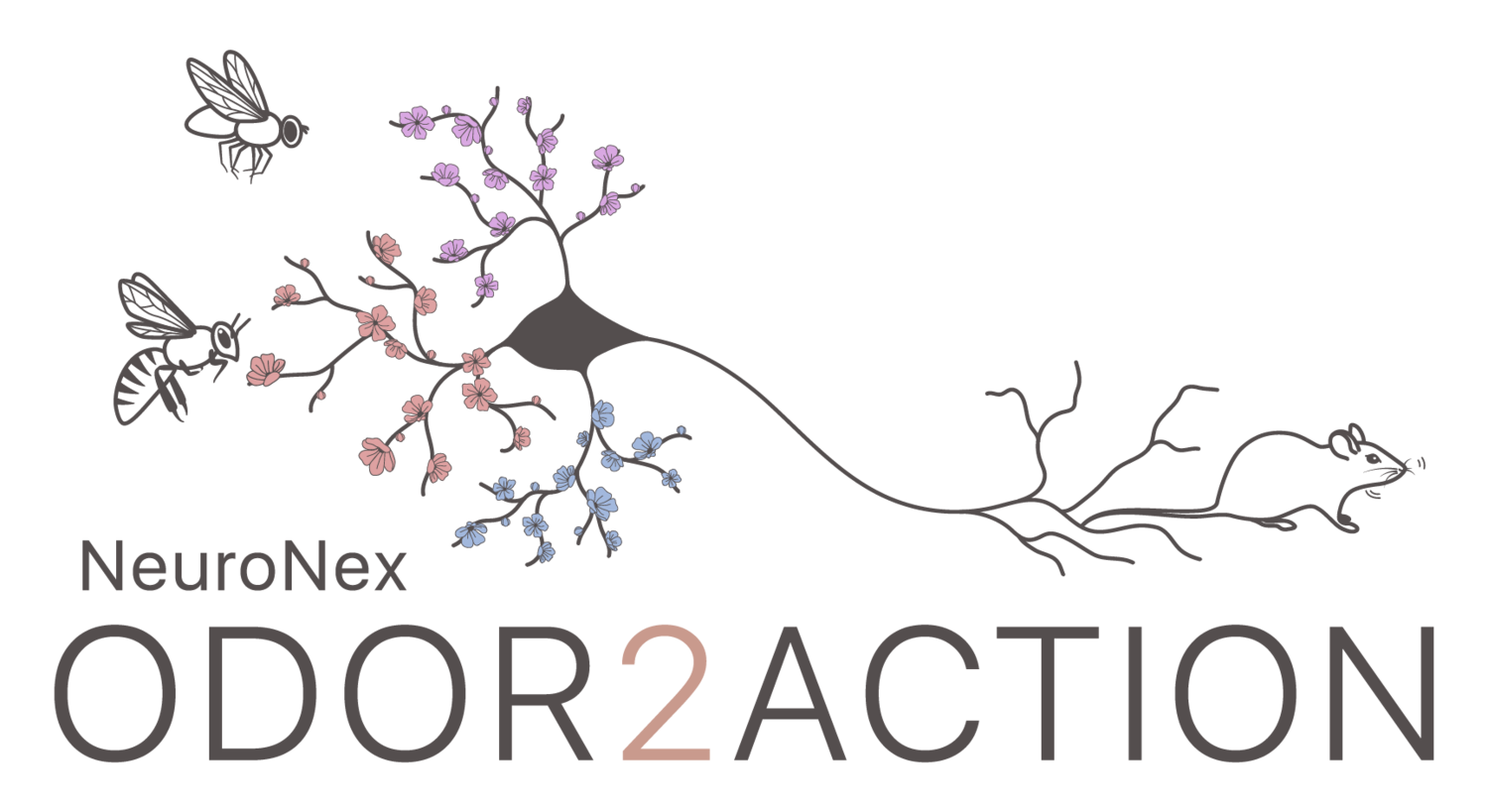Student Spotlight: Hannah Gattuso
The Odor2Action Network brings together international olfaction scientists with the goal of achieving an end-to-end understanding of how brains organize and process information from odors to guide adaptive behaviors. One of the network’s priorities is to train the next generation of scientists to view team science as a meaningful- even essential- part of their careers. We support trainees across the United States, Canada, and United Kingdom in fields spanning neuroscience, engineering, computation/mathematics, biology, data science, and beyond.
As part of our Student Spotlight series, we interviewed Hannah Gattuso, a PhD candidate at the Vilcek Institute of Graduate Biomedical Sciences, NYU Grossman School of Medicine in New York City.
Odor2Action Affiliation: Nagel Lab
How did you find yourself in the field of neuroscience? What piqued your interest in studying this field?
I entered the world of neuroscience as an undergraduate at the New Jersey Institute of Technology. As a biomedical engineering student, I was fascinated by the ease at which our bodies are able to accomplish complicated tasks much better than artificial or computer counterparts. I stumbled upon the Fortune lab, which studied sensory motor transformations in the electrosensory system of weakly electric fish. It was here that the idea of using uniquely poised systems to study specific aspects of neural processing and behavior really piqued my interest. Here in the Nagel lab, I have been able to embrace that idea by using fruit flies, an organism with a limited number of descending motor units and diverse behavior to study the encoding of complex motor output.
What most excites you about being involved with the Odor2Action network?
The odor to action network has brought together a wonderful group of thinkers who are all looking to solve similar questions across model organisms. This group allows for the melding of concepts and ideas in a unique way that helps to further all of our individual research. I am most excited about the potential that this group brings to progress the study of odor guided behaviors at a rate that is not achieved in isolation. It is through collaboration that we as scientists can best push the field forward.
Tell us about an impactful project you’ve worked on as a part of the network.
As part of this network, I have been working to model olfactory navigation in walking Drosophila melanogaster. Our model works to bridge the successes of existing computational models of fruit fly walking with the underlying neurophysiology of the descending motor pathways. This model has been formulated in collaboration with other members of the Odor2Action team and uses a recurrent neural network-like structure to capture multiple phases of olfactory navigation: baseline behavior, odor guided upwind running, and post odor offset search. In the first phase of the model, units, akin to descending neurons, tile a parameter space of forward and angular velocities, with some units being responsible for faster, straighter movements, others for slowered, more curved movements and one for stopping. These units are all simultaneously active and activity through time is governed by a matrix of interactions. This model has two main types of inhibition: inhibition between the stop unit and all other units, and contralateral inhibition between units producing opposite turns. The activity of the units are linearly combined to produce forward and angular movement profiles. We are able to produce physically and statistically similar trajectories across the phases of navigation, using our model, and can switch between baseline and post odor search behavior through increasing contralateral inhibition. Addition of sensory stimuli to the system also successfully captures odor guided upwind running.
How will your training/experience impact the field of neuroscience?
My training experience has allowed me to develop a new model of fly walking behavior that could shift ideas about modeling motor output. It has also allowed me to develop multiple testable hypotheses about descending neurons (DNs) in fruit flies and how their circuits may be constructed. This project will help to elucidate properties and functions of DNs, a little studied but highly important population of neurons.
How will your training/experience impact society more broadly?
Increasing our understanding of descending motor control is important beyond the level of basic science. On a human level, having knowledge of how the nervous system computes and outputs motor behavior could be important in understanding the locus of various neurological and movement disorders. On a broader STEM level, implementing computations for movement similar to those seen in the brain in robotics or autonomous systems could help increase stability and efficiency.
What is the next step for you after completing your degree?
As a fourth year student, I am currently exploring my options for the next step in my career. I am looking into post docs as well as different jobs across and beyond academia to determine where I would like to dedicate my time.


